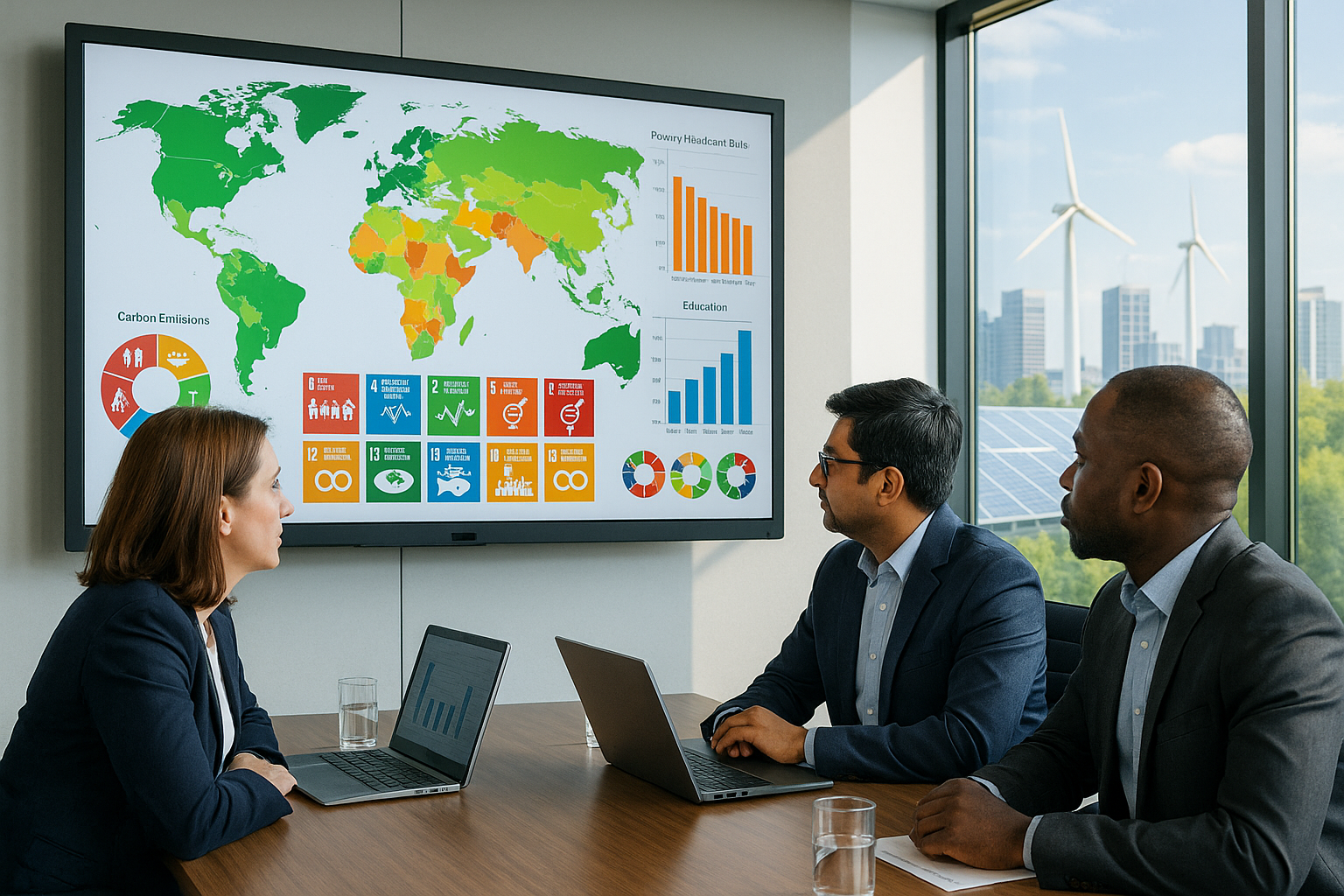World unlikely to meet 2030 SDG targets without major policy shift
According to the analysis, only 136 of the 188 countries are expected to meet the extreme poverty reduction goal by 2050 under current trends. Maternal and infant mortality rates would remain above target thresholds for many low-income countries, and improvements in education, such as universal secondary school completion, would be uneven and regionally limited.

The world is closing in on the United Nations' 2030 Sustainable Development Goal (SDG) deadline, but a new data-driven analysis warns that the pace of global progress remains insufficient to meet most targets. Despite global commitments to end poverty, expand education, and curb environmental degradation, many countries are projected to fall short of key targets unless major course corrections are made.
The study, titled “Analysis of Integrated Global SDG Pursuit: Challenges and Progress” and published in the journal Sustainability, leverages the International Futures (IFs) integrated assessment model to simulate how 188 countries can advance toward quantified SDG targets under four distinct future scenarios: continuation of current trends (Current Path), a human development push (HD), a natural system sustainability drive (NSS), and a combined effort (CSDG) that integrates both. The results provide one of the most comprehensive forecasts on the feasibility of SDG achievement through to 2050.
Can the world achieve the SDGs by staying on the current path?
The Current Path scenario, which assumes continuity in existing policies and development trajectories, shows some limited progress in areas like access to water, sanitation, and education. However, the model suggests that most countries will fall short of achieving major goals, particularly those related to poverty reduction, maternal and child health, and climate targets.
According to the analysis, only 136 of the 188 countries are expected to meet the extreme poverty reduction goal by 2050 under current trends. Maternal and infant mortality rates would remain above target thresholds for many low-income countries, and improvements in education, such as universal secondary school completion, would be uneven and regionally limited.
Environmental goals face even more substantial shortfalls. Global carbon emissions are projected to remain near 8 gigatons by mid-century, well above the 5-gigaton goal. Forest cover, air quality, and renewable energy adoption all progress too slowly in the Current Path forecast, reinforcing that market and policy inertia are insufficient to drive systemic change.
What happens when development and environmental goals are pursued aggressively?
To test the impact of strategic intervention, the study developed three alternative scenarios: Human Development (HD), Natural System Sustainability (NSS), and Combined SDG (CSDG). Each uses “aggressive but reasonable” assumptions for public and private interventions while accounting for fiscal and institutional constraints.
In the HD scenario, significant progress is made in poverty alleviation, health outcomes, and educational access. For example, the number of countries achieving the poverty threshold increases to 158 by 2050. Fertility rates decline more rapidly in low-income countries, enabling broader gains in gender equity, child survival, and school enrollment.
The NSS scenario shows a stronger impact on environmental indicators. Carbon emissions drop further due to targeted investments in clean energy, reforestation, and resource-use efficiency. Urban air quality improves across developing regions, and forest area expands modestly.
The CSDG scenario, which combines both approaches, produces the most balanced progress across human development and environmental indicators. It boosts the number of countries meeting extreme poverty and maternal mortality goals to 161 and 166 respectively, while also delivering meaningful environmental co-benefits. Importantly, the study notes that HD and NSS strategies are not in conflict—rather, they reinforce each other when implemented in tandem.
What structural levers can accelerate SDG progress?
The study identifies four key factors that determine whether countries can accelerate SDG performance through 2050. These include:
1. Governance Quality Strong institutions and transparent governance emerge as foundational to every scenario. Countries with more capable state structures are better positioned to deliver education, health services, and environmental management. Governance also amplifies the impact of external financial transfers and local resource mobilization.
2. Fiscal and Technological Capacity While the scenarios assume reasonable constraints, real-world implementation depends heavily on budget prioritization and technological absorption. Education, infrastructure, and renewable energy programs require not just capital but institutional capacity to implement reforms at scale.
3. Population Dynamics Fertility rates remain a major structural determinant of future development outcomes. Lower fertility in high-growth countries accelerates poverty reduction, boosts education attainment, and reduces environmental pressure per capita. HD interventions targeting women’s empowerment and access to family planning play a crucial role here.
4. Sectoral Integration The study emphasizes that the SDGs are deeply interconnected. Investments in health and education often yield environmental dividends through more sustainable consumption and production. Likewise, clean energy and green urban planning can support public health and reduce economic vulnerability. Ignoring this interdependence leads to missed opportunities and inefficient use of limited resources.
A roadmap to 2050: Integration over isolation
The IFs model simulations point to a single, overarching conclusion: isolated efforts will not be enough. Pursuing either human development or environmental protection alone yields suboptimal results. The greatest gains come from an integrated strategy that aligns education, health, governance, and environmental stewardship.
The Combined SDG scenario illustrates this potential but also reveals the scale of the challenge. Even under aggressive interventions, many targets remain unmet. For example, global emissions reductions still fall short of the 5-gigaton threshold. Similarly, universal secondary education and full gender parity remain elusive in dozens of countries.
Nevertheless, the study offers critical guidance for policy design. By explicitly modeling trade-offs, fiscal limits, and institutional conditions, it helps governments, development agencies, and civil society organizations better understand where to focus efforts and how to optimize impact.
- FIRST PUBLISHED IN:
- Devdiscourse










